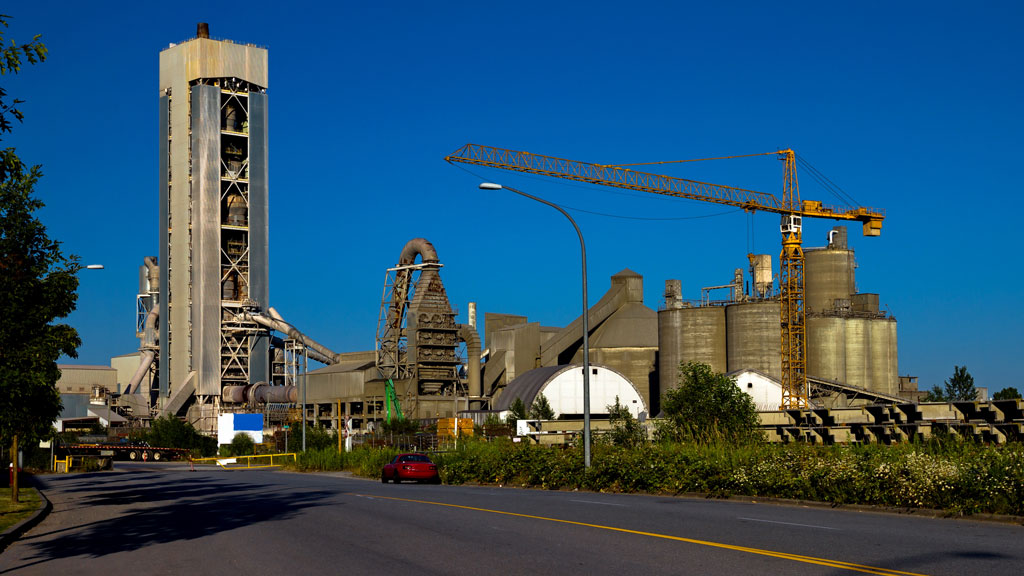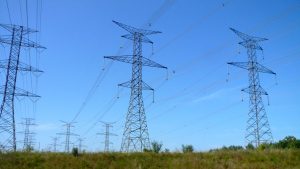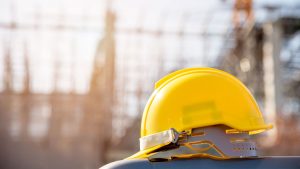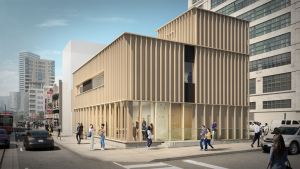Canadian cement producers are scrambling to find means of cutting CO2 emissions on all fronts as the federal government clamps down on emitters and has given notice that low-carbon concrete will be integral to future building contracts as part of its climate change strategy.
The cement industry is tagged as contributing seven to eight per cent of global CO2 emissions. “Government is the largest purchaser of concrete and can incorporate the CO2 emissions of concrete products in its procurement process in addition to traditional factors like bid, cost and performance. The Treasury Board of Canada Secretariat would be encouraged to consider concrete as an initial sector to pilot its Greening Government Strategy,” said a release announcing an industry and private sector working group.
The group, led by the Cement Association of Canada, the National Research Council and the Standards Council of Canada, in collaboration with Innovation, Science and Economic Development, has until December 2021 to roadmap a path to Canadian leadership in low CO2 emission concrete use.
Canada’s move aligns with the U.S. where states have adopted bills to use low-emission concrete and Europe’s toughened stance on emitters, prompting companies such as HeidelbergCement to announce the building of net-zero plant.
“We are seeing innovation in the industry such as we have not seen before,” said Jeff Sieg, communications director for Lehigh Hanson.
His company, a North American subsidiary of HeidelbergCement, is working on all fronts, alternative fuels, new low-carbon products and carbon capture, store and use strategies, to reduce its CO2 footprint.
“Our competitors are also doing different things,” said Sieg, adding this will benefit the industry as more options will speed up change. “It is a transition time for the industry.”
Sieg said Lehigh Hanson cement plants in the U.S. and Canada are exploring alternative fuels such as biofuels, natural and tires. Its three Canadian cement plants, Delta, Edmonton and Picton, are producing EcoCem and EcoCem Plus, which replaces a portion of the Portland cement clinker with ground limestone. EcoCem Plus, which also uses flyash, can reduce the carbon footprint by as much as 22 per cent.
At the Edmonton cement plant, Lehigh Hanson is also working on a pilot project that will capture CO2 from flue gases. The project is still in its feasibility stage, said Sieg, with the company looking at uses for the captured CO2 such as in concrete production.
The Lehigh feasibility study looks at the viability of capturing 90 to 95 per cent of the CO2 – an estimated 600,000 tonnes annually. The Edmonton project is a partnership with the International CCS Knowledge Centre and Mitsubishi Heavy Industries Group.
Lafarge is also exploring new options. This spring the company launched its low-carbon cement EcoPlanet, which decreased its manufacturing CO2 emissions by 35 per cent and follows on EcoPact concrete’s release last year.
In Seattle, Wash. an optimized mix of EcoPlanet cement and slag reduced emissions even further.
“The emissions were reduced by 62 per cent,” said Rene Thibault, Lafarge Holcim’s head of North America.
Lafarge also has a carbon capture and use pilot project CO2MENT with technology company Svante in place at its Richmond, B.C. cement plant. It is nearing its third phase after launching in 2019.
The first phase involved pre-treating flue gas for Svante’s carbon capture technology.
“Currently, we are in stage two, where the CO2 is separated from the flue gas through Svante’s carbon capture technology. As we advance to phase three, Lafarge is working with Svante to identify feasible utilization opportunities for the captured CO2 and considering liquefaction of the CO2,” said Jill Truscott, Lafarge’s Western Canada communications manager.
Phase three, which involves the utilization and possible liquefaction, is likely by end of 2022. “Liquefaction is not mandatory for some of the utilization options being considered, however, it is an option should it be required for utilization,” she said.
In early July, Svante received a $25 million federal government boost, which allows the company to set-up a new Centre of Excellence for Carbon Capture Use and Storage in Burnaby, B.C. and to scale up its manufacturing operations to produce commercial scale structured absorbent filters and to test its proprietary rapid adsorption machine designs.
Lafarge has also signed a non-binding memorandum of understanding (MOU) with Calgary-based Carbon Upcycling Technologies.
The MOU allows for the potential integration of Carbon Upcycling’s CO2-embedded concrete additive into Lafarge operations, while exploring opportunities to expand Carbon Upcycling’s operating capacity by developing larger processing facilities.
Carbon Upcycling produces carbon treated concrete additives such as its treated flyash, landfill ash, steel slag, crushed glass and other materials that increases the concrete strength but reduces the amount of cement required and can reduce concrete’s footprint by 25 per cent over the lifecycle.
“We are into carbon utilization by trade,” said Ryan Bourns, strategy and business development lead for Carbon Upcycling.
Currently, the business is capturing CO2 from flue gases at a Calgary natural gas power plant and placing the gas into a pressurized reactor along with materials. The tumbled material captures the carbon and becomes a carrier taking it forward into concrete ready mix production.
As well as working with Lafarge, “we are also supplying BURNCO with flyash,” Bourns said, as the company produces and sells its own enhanced flyash.
It has also formed a strategic relationship with Mexico’s Cemex, although it has yet to work in the country. The multi-national company is interested in the ability to use substitute materials that will reduce the cement content but still provide concrete strength.
Bourns said the company wants to move forward and develop a 200-ton-per-day facility and also locate a string of capture and utilize facilities in areas where there is opportunity to distribute material to the surrounding ready mix concrete suppliers.
BURNCO is one of more than 300 worldwide concrete producers that use the CarbonCure technology, developed by a Canadian company.
Bourns said he is encouraged by industry and government in its recent bid to decarbonize the industry.
“This is going to have a trickledown effect on every project whether there is government or private funding,” he said.
For the joint industry and federal government statement on reaching net-zero carbon in concrete see https://www.ic.gc.ca/eic/site/icgc.nsf/eng/07730.html.











Hello from Vallejo, California a working class town on the far edge of the San Francisco Bay where citizens stopped a so-called “green” cement factory from being built on our waterfront. The proposed company’s own documents revealed that 16 tons of toxic dust a year would have escaped into the nearby neighborhood from the loading and movement of the materials stored outside the plant. It was the stored materials—not the smokestack—that put the residents in harm’s way.